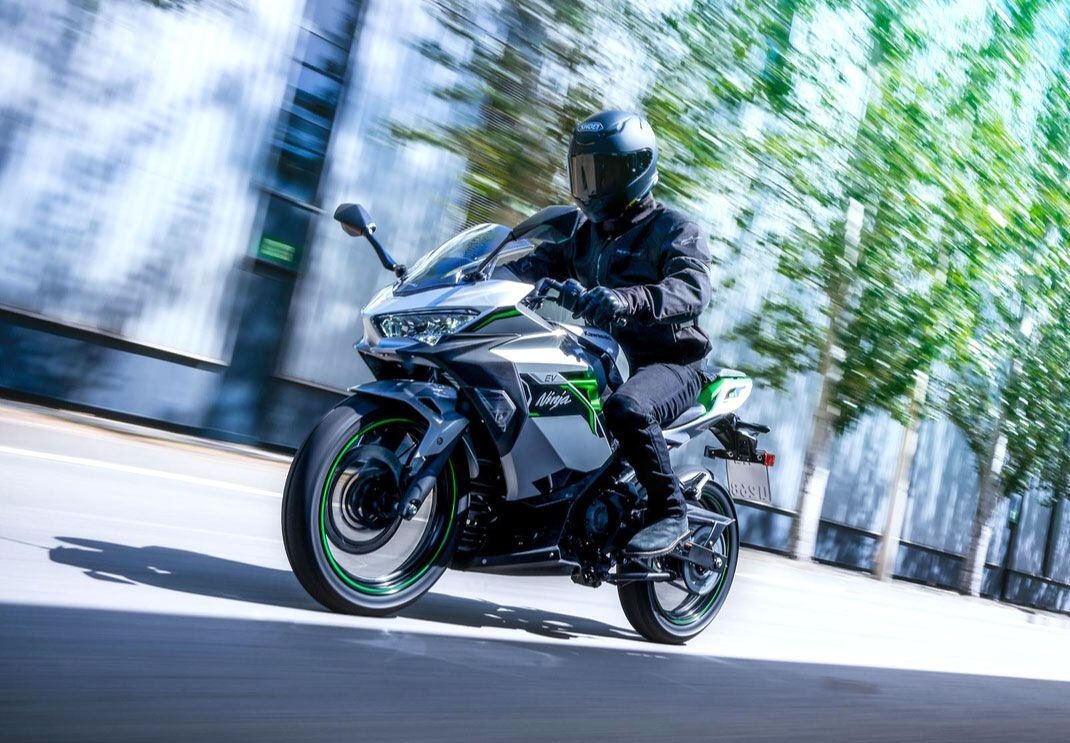
Kawasaki wowed everyone when it debuted its first electric motorcycles at EICMA 2022 last November (read the Kawasaki’s Electric Motorcycle Concept At EICMA article), and now production versions of those sportbike and naked bike options—the Ninja e-1 and Z e-1—are here in the States. Sure, the Japanese Big Four have been surprisingly slow in their embrace of green tech compared with other legacy manufacturers, but the roll out of its EVs for the US market shows that Team Green means business. The two all-new battery-powered models share the same underpinnings, with a lightweight trellis-style frame and design language very similar to their ICE-equipped Ninja and Z cousins, along with the kind of basic suspension and user-friendly features you’d expect to see on bikes firmly aimed at commuters. The bigger news, of course, is their 5.0kW (nominal) electric motors and dual batteries.
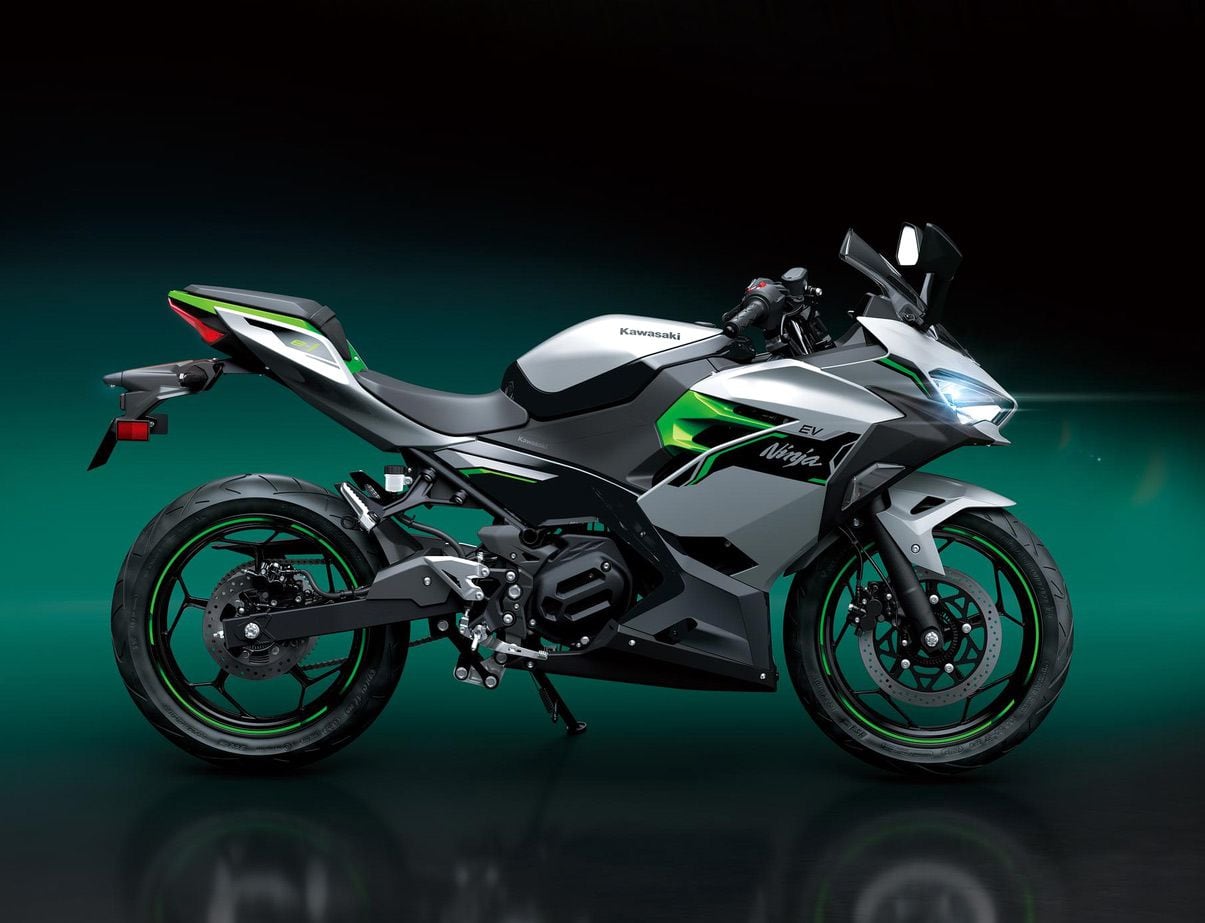
Officially, Kawasaki will be offering the Ninja e-1 ABS and Z e-1 ABS models for sale in the US, with both running the same powertrain anchored by a brushless 5.0kW (nominal) electric motor and powered by two removable lithium-ion batteries. Power is transferred from the motor through a primary reduction gear to the chain (secondary reduction) final drive.
According to Kawasaki, the motor is tuned to deliver strong low-end punch and a quick throttle response, with two power modes—Road and Eco—available. Top speed in Road mode is approximately 52 mph for the Ninja e-1 and approximately 49 mph for the Z e-1, while top speed in Eco mode is limited to approximately 37 mph for the Ninja e-1 and 35 mph for the Z e-1. If that doesn’t sound exactly eye-popping, you’ll be glad to hear Kawasaki also added an e-boost function which gives a bit more power for better acceleration and a higher top speed—but only for 15 seconds (Kawasaki says that’s to maximize range and battery temperature).
With e-boost on the Ninja e-1, top speed is 65 mph in Road mode and 45 mph in Eco. On the Z e-1, top speed is 65 mph in Road mode with e-boost enabled, and approximately 42 mph in Eco mode. Not great, but it’s still better than 52 mph; once the batteries show less than a 35 percent state of charge, the bike will switch to limited-power operation and the e-boost function will be unavailable. Both bikes also feature a Walk mode with reverse, making it less cumbersome to push your machine around in a parking lot.
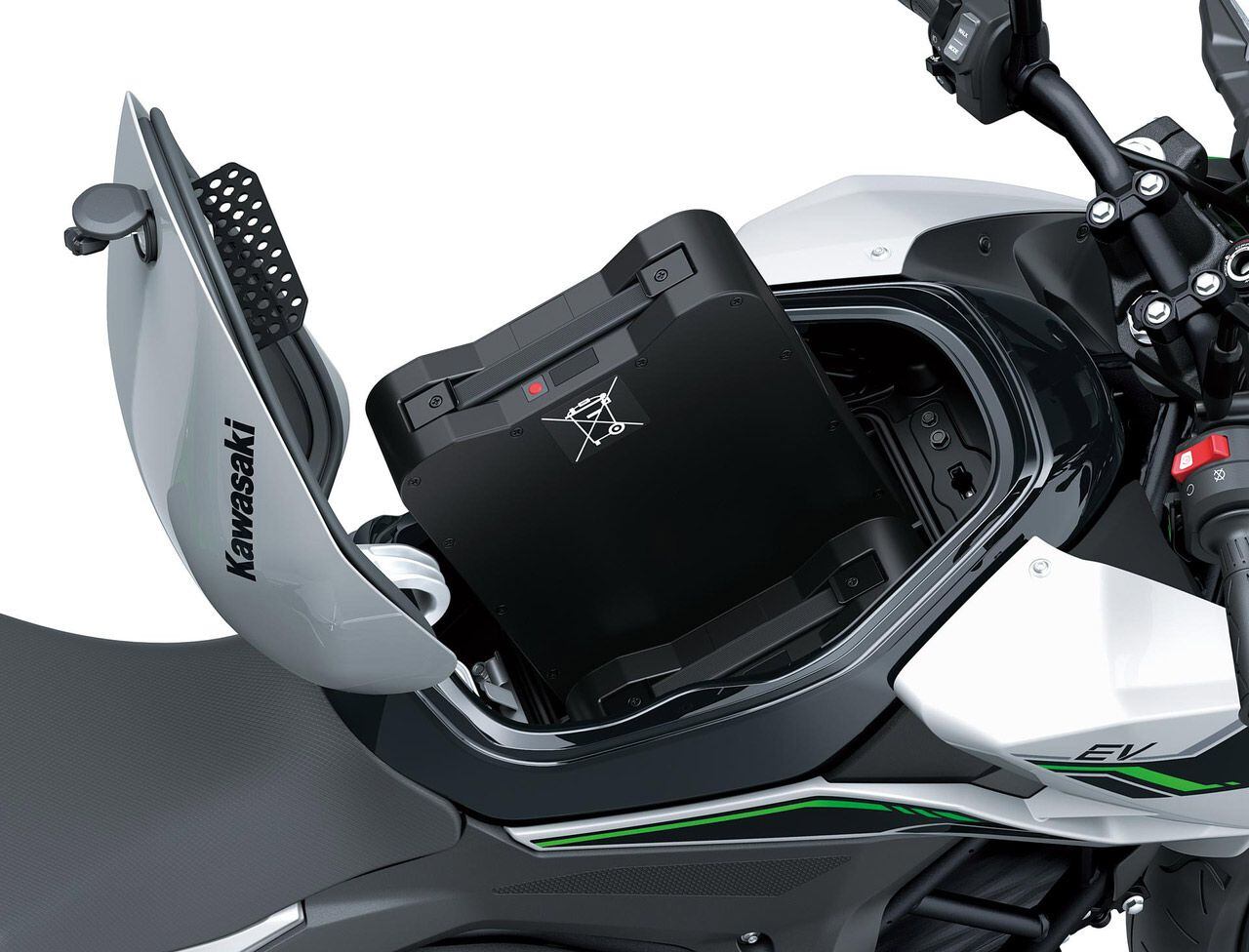
As for the dual battery setup, we like the flexibility of charging scenarios that it offers; you can charge them either installed on the bike, or remove to charge inside, either individually or on an optional charging dock. The batteries have a nominal voltage of 504 volts and weigh 25.3 pounds each, and if things go south, Kawasaki says you can even run the bike on one battery (in Eco mode) if needed. And you just might need to; the claimed range for either bike, in Eco mode, is a paltry 41 miles. Even for commuter models—which Kawasaki is clearly positioning these as—that is nothing to write home about, and in fact there’s very little mention of it in the press release. Helping matters somewhat is the Ninja e-1 and Z e-1′s regenerative system, which allows the energy of deceleration to be recycled back to the battery when the rider rolls off the throttle. Total time to fully charge both batteries takes approximately 7.4 hours from 0 percent (3.7 hours per battery).

A 4.3-inch all-digital TFT color screen dominates the cockpit on both the Ninja e-1 and Z e-1 with the usual data displays, including modes, e-boost gauge, battery temperature and charge levels, clock, connected devices, speedometer, odometer, tripmeters, electric consumption, cruising range, and more. Riders are also able to adjust its backgrounds and brightness, and tapping into Bluetooth along with Kawasaki’s Rideology smartphone app allows even more features to be accessed.
Another bonus on these electric models is the built-in storage compartment located where the fuel tank would normally be. Lifting up the cover gets you access to 1.3 gallons of space for small items, and an additional compartment underneath the seat can accommodate a U-lock and the off-board charging adapter.
But even beyond their shared powertrains and electronics, both the Ninja e-1 and Z e-1 have remarkably similar spec sheets across the board, with both getting a plain-Jane nonadjustable 41mm telescopic fork up front and Uni-Trak single shock out back attached to 17-inch wheels with single disc brakes. If all that sounds familiar, it’s by design, says Kawasaki; the frame, forks, and disc brakes are all based off of Kawasaki’s 400cc motorcycle and designed to make riders feel at home on an electric motorcycle.
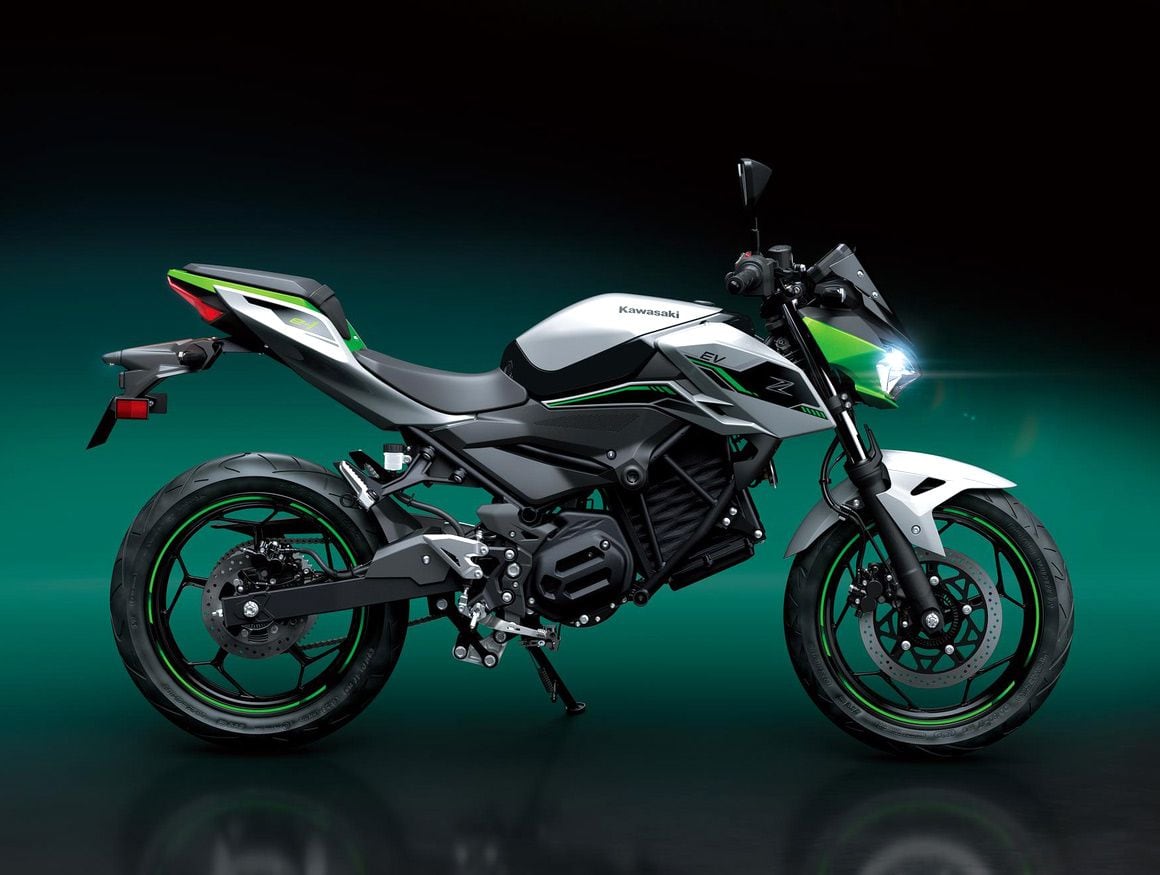
So what exactly is the difference between the Ninja e-1 and Z e-1? As you’ve probably already guessed it comes down to styling and ergonomics, with additional full-fairing bodywork and chin spoilers at the bottom of the Ninja marking a distinct connection to its high-performance siblings. Inner panels on the inside of the upper cowl highlight the TFT instrumentation and create a well-integrated cockpit, with a fairly relaxed rider triangle and a low seat height to accommodate a wide range of riders. The clip-on handlebars atop the fork tubes also clearly mark the Ninja e-1 as the sportier of the two.
Meanwhile the Z e-1′s minimalistic bodywork goes for the streetfighter vibe of Kawasaki’s supernaked machines, but because there’s no engine or exhaust element as with those ICE models, the electric bike can sport a much higher ground clearance, with a sharper front cowl and a compact, dark meter visor for more menace. A wider, taller handlebar allows for good leverage and adds to its easy maneuverability at low speed. Both e-models also feature a new silver and matte lime green color scheme to set a thematic tone for Kawasaki EV models going forward.
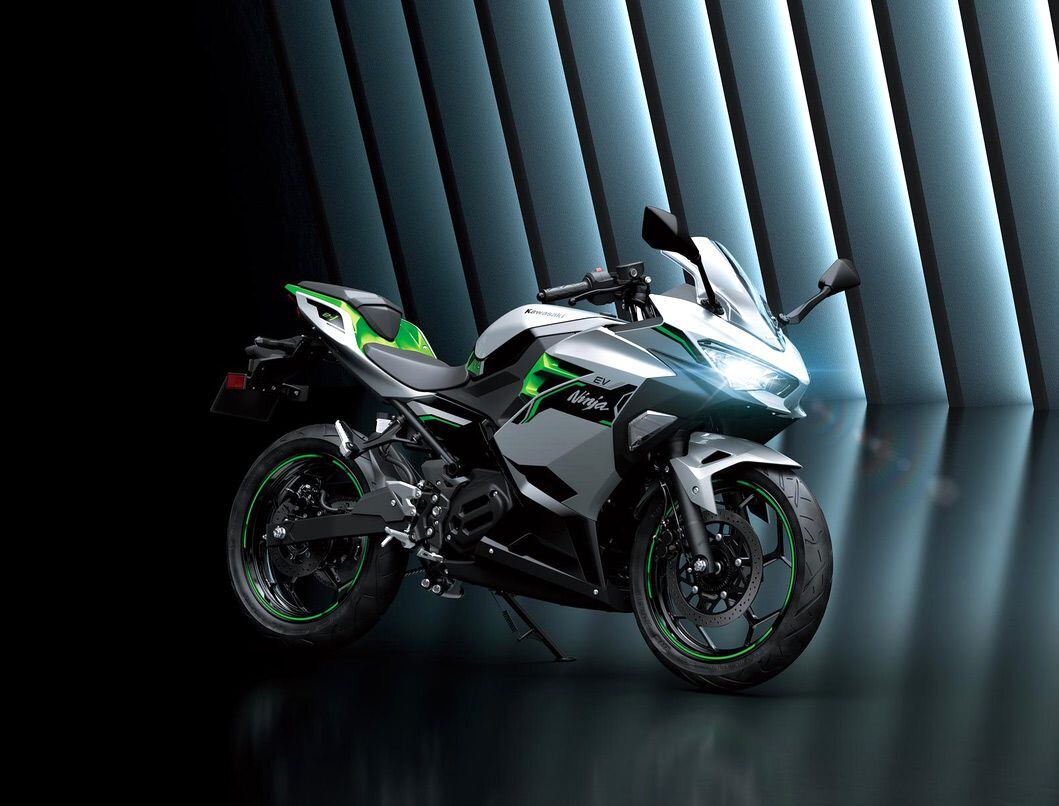
Kawasaki’s 2024 Ninja e-1 ABS will be available in Metallic Bright Silver/Metallic Matte Lime Green/Ebony with an MSRP of $7,599.
The 2024 Kawasaki Z e-1 ABS can be had in Metallic Bright Silver/Metallic Matte Lime Green/Ebony with an MSRP of $7,299. Both bikes will be available in October.
2024 Kawasaki Ninja e-1 ABS / Z e-1 ABS Technical Specifications and Price
| MSRP: | $7,599 (Ninja e-1) / $7,299 (Z e-1) |
|---|---|
| Motor: | Air-cooled, interior permanent magnet synchronous motor |
| Rated power: | 5.0kW; 9.0kW max |
| Max Speed (Road and Eco Modes): | 55 mph, 65 mph w/ e-boost (Ninja e-1) / 53 mph, 63 mph w/ e-boost (Z e-1) |
| Claimed Torque: | 29.7 lb.-ft. @ 500 rpm |
| Transmission/Final Drive: | Single reduction gear/chain |
| Battery Type: | Lithium-ion (x2) |
| Battery Range: | 41 mi. in Road mode |
| Battery Charge Time: | 3.7 hr. |
| Frame: | Steel trellis |
| Front Suspension: | 41mm telescopic fork, 4.7 in. travel |
| Rear Suspension: | Single, gas-charged shock, spring preload adjustable; 5.2 in. travel |
| Front Brake: | 2-piston calipers, 290mm disc; ABS |
| Rear Brake: | 2-piston caliper, 220mm disc; ABS |
| Wheels, Front/Rear: | Cast aluminum; 17 in. |
| Tires, Front/Rear: | 100/80-17 / 130/70-17 |
| Rake/Trail: | 24.4°/3.7 in. |
| Wheelbase: | 53.9 in. |
| Ground Clearance: | 6.7 in. |
| Seat Height: | 30.9 in. |
| Weight: | 309 lb. (Ninja e-1) / 298 lb. (Z e-1) |
| Contact: | kawasaki.com |
/cloudfront-us-east-1.images.arcpublishing.com/octane/3N2Z362UNJB3NGFSXUAWTJPG24.jpg)

